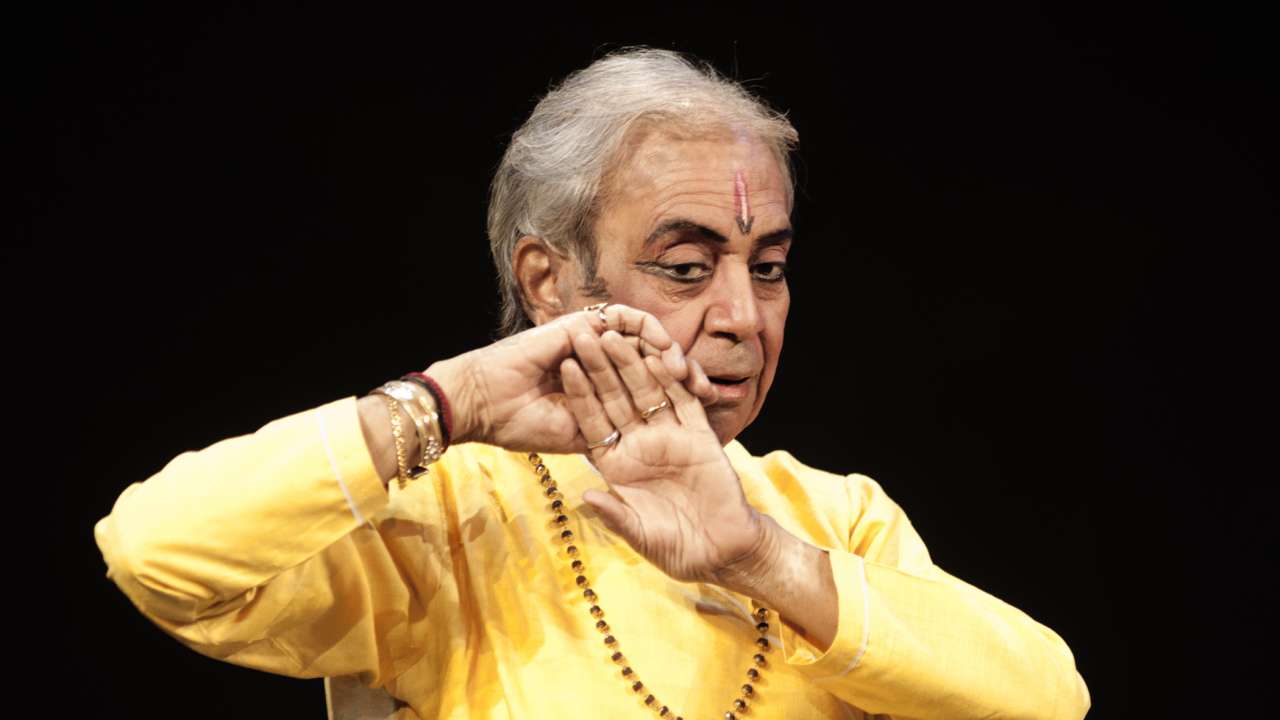After the opening acts of his followers, Birju Maharaj ascended the stage to a resounding reception at one of a series of classical performances organised by the Society for the Promotion of Indian Classical Music and Culture Amongst Youth (SPIC MACAY) in Delhi University in the mid-2000s. What would strike a layperson as immediately impressive is his ability to convey the fundamentals of a complex dance style in simple terms.
It took the kathak maestro all of a few minutes to change the evening into a memorable watching experience, from replicating numerous objects with only feet movement and the music of the ghungroo (anklets) to leaving the audience in raptures with a final peacock position. And he’d pique the audience’s interest with a casual comment like, “Kathak dancers never had to wear cosmetics or lipstick.” Our lips turned crimson when we chewed paan (betel leaf).”
Birju Maharaj Cause of Death:
Birju Maharaj, who would have turned 84 in February, died in the early hours of Monday at his Delhi home. According to PTI, he was accompanied by his family and disciples, laughing and happy until the death. After supper, they were playing “antakshari” when he became ill, according to his granddaughter Ragini Maharaj.
Maharaj has five children: three girls and two sons, as well as five grandkids.
He had a kidney problem and had been on dialysis for the past month because of his high blood sugar. His granddaughter told PTI that he died after a heart arrest.
“We were playing ‘antakshari’ because he liked old music while he ate his dinner.” He was lying down when his breathing became irregular. Because he was also a heart sufferer, we believe it was a cardiac arrest. “It occurred between 12:15 and 12:30 a.m.” It couldn’t have been more than a minute. We went to the hospital, but we were unable to save him. She went on to say, “He died before he got to the hospital.”
Birju Maharaj History:
Brijmohan Nath Mishra (Birju Maharaj) was born on February 4, 1938, to a kathak dancer family that includes his two uncles, Shambhu Maharaj and Lachhu Maharaj, as well as his father and master, Acchan Maharaj. Jagannath Maharaj, his father’s real name, was a court dancer in the Raigarh princely state. Birju Maharaj was trained by his father and uncles as a child, and at the age of seven, he gave his first recital. He rose to prominence as a kathak performer in the Lucknow “Kalka-Bindadin” gharana, as well as a vocalist in Hindustani classical music.
He lost his father when he was only nine years old. He was already teaching kathak at the Sangeet Bharati music academy in New Delhi when he was 13 years old. It was the beginning of a remarkable teaching career that would have an impact on generations of students, including movie stars.
He went on to teach at the Bharatiya Kala Kendra in New Delhi and the Kathak Kendra (National Institute of Kathak Dance). He was the dean of faculty and director at this Sangeet Natak Akademi centre before retiring in 1998. After that, he established his own dancing school, Kalashram, in Delhi.
His contribution to the realm of cinema has likewise stood the test of time. In Satyajit Ray’s Shatranj Ke Khiladi (1977), the thumri exponent created and sung the music for two dance sequences, and choreographed the song Kaahe Chhed Mohe in the 2002 rendition of Devdas.
His death was mourned by the entire country.
Condolences By Politicians & Artists:
His death, according to Prime Minister Narendra Modi, is a “irreparable loss” to the whole art world. “Deeply saddened by Pandit Birju Maharaj ji’s death, who gave Indian dance a distinct place in the globe… “In this hour of grief, my condolences to his family and fans,” he stated.
“The death of great Pandit Birju Maharaj signals the end of an era,” President Ram Nath Kovind tweeted. It leaves a gaping hole in Indian music and culture. He became a legend for his unrivalled contribution to the globalisation of Kathak. “Our heartfelt condolences go out to his family and admirers.”
Rahul Gandhi, the Congress leader, said his contribution to Indian classical dancing is unrivalled, and he would be remembered for it. Maharaj’s death, according to Durga Jasraj, daughter of the late classical musician Pandit Jasraj, was “a huge loss to Indian performing arts.”
Geeta Chandran, a Bharatnatyam dancer, also expressed her sorrow at his loss, describing his contribution to the world of dance as historic and one that will be carried on by his incredible tribe of disciples and students.





